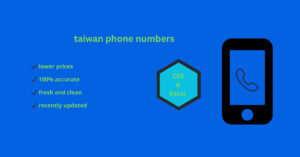You can then identify which specific metrics inform your KPIs.
For example, metrics on user engagement will be linked to:
the number of return users
if they engage with the chatbot's product recommendations
how many total website visitors use the chatbot
4. Link metrics to monetary values
To understand the taiwan phone numbers end result of your chatbot investment, you need to quantify its impact.

For example:
If the chatbot reduces support requests, calculate how much you save on labor costs by automatically resolving queries.
If the goal is to increase lead generation, calculate the average revenue per lead and multiply it by the number of leads the bot generates.
This step is key to calculating the ROI of a chatbot.
5. Reiterate and improve
Monitoring chatbot analytics is an ongoing and evolving process.
Regularly review your chatbot's performance. Analyze data to identify patterns, such as high dropout points, common errors, or ineffective resolution paths.
As your chatbot evolves – with new features or expanded use cases – you'll need to adapt and expand the metrics it tracks, along with its KPIs.
9 chatbot metrics to follow
1. Number of interactions
One of the most important metrics is the most basic: do people use your chatbot?
If not, your team needs to signal better, or make the chatbot a more necessary step in the process (i.e., employees can only schedule vacation days through the chatbot, rather than giving them the option to schedule through an HR representative or the chatbot).
2. Average chat duration (both duration and number of messages exchanged)
The ideal interaction with a chatbot is efficient and helpful. If interactions take too long, try to identify and reduce bottlenecks.
3. Number of flows started
Does your chatbot identify and resolve the problem immediately, or does it go through several flows to find a solution?
4. Number of repeated flows
If your chatbot repeats the same flows, it is a sign of ineffectiveness. It may be because your chatbot does not correctly recognize the user's need from the beginning.
5. Chatbot contention rate
Chatbot contention rate refers to how many users interact with your chatbot and complete the interaction without needing to interact with a human.
A successful chatbot can have a contention rate of ~65%, as there will always be interactions that need human assistance.
6. Number of regular users
If your chatbot is useful, you should see returning users.
7. Number of active users per period
Knowing what times users interact with your chatbot can help make decisions about scheduling shifts for in-person agents.
